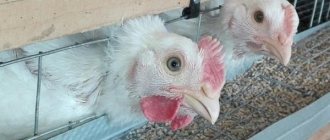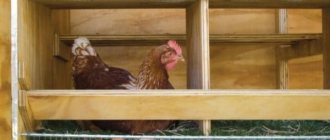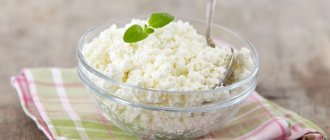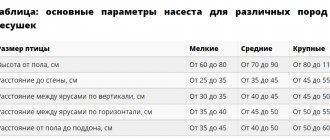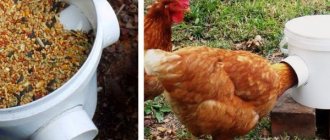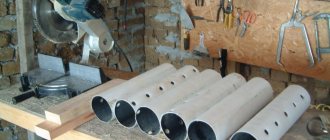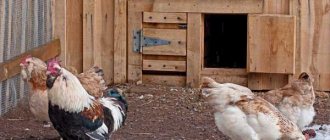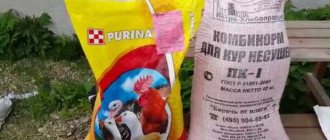Feeding hens and chicks with compound feed significantly accelerates their growth and development. The bird gains weight faster, and the egg production of laying hens increases by 15%. And with the addition of minerals and vitamins, poultry productivity increases by 25-30%. Moreover, it does not matter what kind of compound feed to feed the bird - factory-made or home-made, the main thing is that it contains everything necessary for the bird’s body.
Factory feed
Feeds of different compositions are produced for meat and egg-producing chickens. The industry produces a wide range of feed in loose, expanded and expanded-granulated form.
They are selected taking into account:
- productivity areas;
- age;
- floor.
When preparing expanded feed, short treatment at high temperature under high pressure is used. This method allows you to neutralize harmful substances, obtaining an optimal granule structure.
Complete feed can completely replace grain and become the only source of nutrition. The main thing is that the feed is used to feed the group of birds for which it is intended. Let's take a closer look at complete feeds produced by industry for chickens of different groups.
PC-0
This feed is given to broiler chickens from 1 to 14 days. This feed mixture contains substances necessary for the growth of chicks fattened for meat - minerals, trace elements, vitamins and beneficial bacteria. The composition of PC-0 is in Table 1.
Table 1
| Ingredients in PC-0 | Content, % |
| Wheat | 49,99 |
| Peas | 2 |
| Soybean full fat | 2 |
| Soybean meal | 25 |
| Sunflower meal | 2 |
| Corn gluten | 1,5 |
| Fish flour | 1,5 |
| Sunflower oil | 2,5 |
| Limestone flour | 1,57 |
| Table salt | 0,13 |
| Lysine monochlorohydrate | 0,41 |
The PK-0 feed also contains antioxidants, enzymes, and a vitamin and mineral premix.
Caloric content of 100 g of PC-0 – 300 kcal. Proteins make up 21% of the total feed mass.
PC-0 contains sodium lasalocid. It is added to the feed for preventive purposes - to prevent coccidiosis.
PC-1
Compound feed PK-1 is intended for laying hens from one year old. This is a highly nutritious complete feed enriched with vitamins and minerals.
The composition of feed PK-1 is in Table 2.
table 2
| Ingredients in PC-1 | Content, % |
| Wheat | 62,5 |
| Meat and bone meal | 4 |
| Sunflower oil | 2,3 |
| Feed yeast | 2,5 |
| Baking soda | 0,07 |
| Table salt | 0,1 |
| Tricalcium phosphate | 1,95 |
| Limestone flour | 7,5 |
| Sunflower meal | 17,5 |
| L-threonine 98% | 0,118 |
| L-lysine monochlorohydrate | 0,301 |
| DL-methionine 98.5% | 0,1 |
| Holi chloride B4 | 0,06 |
| Premix P1-2 | 1,0 |
The energy value of 100 g of PC-1 is 269 kcal. Protein makes up 16% of the total feed mass.
According to GOST, mixed feed for laying hens should include, along with corn grain, wheat and other feed ingredients, yeast, vitamins, minerals, antioxidants, prebiotics, amino acids, antibacterial drugs, mold inhibitors.
PC-1 can be purchased in 40 kg bags. The price of one bag is 850 rubles. One laying hen should receive 120 g of feed daily. Feed mills also produce several subspecies of PC-1, designed for a certain age of laying hens, for example:
- PC 1-18 – complete feed for laying hens 1-2 months old.
- PK-1-1 – for laying hens after 48 weeks. Positively affects the taste and quality of eggs. The yolk of the eggs becomes bright orange, the shell becomes harder, and the chicken fluff thickens.
- PC-1-25 – after 48 weeks. This is a balanced food that contains prebiotics, enzymes, antioxidants and a coccidiostat.
If the feed label contains the abbreviation “KK”, this means that the feed is concentrated - it should be added to the main diet, and not used as a separate feed. KK consists mainly of wheat bran, to which fishmeal, cake, shell, limestone and barley waste have been added.
An excess of protein, as well as its deficiency, leads to a deterioration in the egg production of chickens.
PC-2
PK-2 – compound feed for young eggs. Give to chicks aged from 1 to 8 weeks. The food contains medications in prophylactic doses. The composition of PK-2 feed is in Table 3.
Table 3
| Ingredients in PC-2 | Content, % |
| Corn | 48,2 |
| Wheat | 20,3 |
| Soybean cake | 12,8 |
| Fish flour | 1 |
| Sunflower cake | 12,8 |
| Table salt | 0,3 |
| Chalk | 2,2 |
| Methionine | 0,1 |
| Lysine | 0,1 |
| Premix | 1 |
| Monocalcium phosphate | 1,2 |
Available in the form of small cereals or granules. The cost of one kg is about 25 rubles. Dosage - according to the instructions, selected according to age. 100 g – 290 kcal. Protein makes up 18% of the total feed mass.
PK-3
PK-3 – feed for egg-laying chickens. Give from the 7th week to 3.5 months. It is given at the age of 4.5-5 months. But in the period from 3.5-4.5 months, chickens are fed PK-4 food. The composition of PK-3 feed is in Table 4.
Table 4
| Ingredients in PC-3 | Content, % |
| Corn | 35 |
| Wheat | 30,2 |
| Soybean cake | 2 |
| Soya extruded | 8,4 |
| Sunflower cake | 19,5 |
| Table salt | 0,3 |
| Chalk | 2,4 |
| Monocalcium phosphate | 1 |
| Lysine | 0,2 |
| Premix | 1 |
100 g – 260 kcal. Protein makes up 16% of the total feed mass. A bag weighing 25 kg costs about 600 rubles. The dosage is indicated in the instructions.
PK-7 – food for crosses, 18-22 weeks old. It is not easy to buy such feed; it is usually made to order. And this is not all the feed for laying hens, chickens and roosters that are produced in feed factories.
Advantages and disadvantages of industrially produced compound feeds
Thanks to compound feeds, it is possible to achieve high egg and meat productivity, spending a minimum of money and time. The composition of the combined feed includes grain, vegetables, cake, vitamin and mineral supplements. Chickens kept in captivity and without access to natural feed prefer grain mixtures, but compound feed has important advantages:
- completeness - the feed contains everything necessary for bird nutrition;
- efficiency;
- you can change the composition.
Along with industrial feed, you can use homemade feed - this is a more economical option, but it requires a lot of time.
How to properly prepare a diet for fattening at home
The composition of pork feed is assessed according to the following parameters:
- nutritional value - this means the proportion of protein, fiber, energy value of the feed;
- mineral composition – the feed mixture must contain sufficient amounts of K, Na, Fe, P, S and other elements;
- grinding indicators - whole grain is poorly absorbed by the pig’s stomach. Before feeding, the grain must be ground for better absorption. There are fine, medium and coarse grinds. The younger the animal, the higher the degree of grinding should be;
- granule diameter is an indicator for granulated feed. So, gilts can be given pellets with a diameter of 8 mm, adults - 10 mm.
The listed parameters are selected for each age group. Daily feed for an adult boar is not suitable for a gilt.
Composition for suckling piglets: table for preparing feed mixture
In the first days, mother's milk is sufficient for suckling piglets. However, it should be borne in mind that sow milk is low in iron and copper. Injections of drugs help correct the situation, since this problem cannot yet be solved with nutrition.
Read about keeping and feeding pregnant sows here.
Piglets begin to be fed additionally from day 2, but only whole milk is used. It is recommended to give it to piglets up to 31–40 days, gradually replacing it with reverse milk from 21 days.
On days 8–10, piglets begin to be supplemented with compound feed. Its composition may vary slightly.
| Component | Age up to 30 days | ||
| 1 | 2 | 3 | |
| Dry return | 20 | 15 | 20 |
| Pea flour | 3 | 6 | — |
| Oat flour | 10 | 10 | — |
| Barley | 40 | 40 | 61 |
| Corn | 10 | 10 | — |
| Feed yeast | 4 | 8 | 9 |
| Fish flour | 6 | 3 | 2 |
| Meat and bone | 2 | 2 | 2 |
| Alfalfa | 1 | 2 | 2 |
| Carbohydrates | 1 | 1 | 1 |
| Mineral mixture (chalk and salt) | 2 | 2 | 2 |
| Sunflower cake | 1 | 1 | 1 |
Grain mixture up to 1.5 months
Gradually, the diet of suckling piglets is made more varied so that after weaning from the sow, the animal is already accustomed to all types of food and does not suffer from hunger. So, in the first week, the grain for feed is roasted to give it a taste and smell that is attractive to piglets. Beets or green grass begin to be added from 10–12 days in crushed form.
The piglets are fed in small portions. The main task is not so much saturation as the adaptation of the piglet’s digestive system to the feed.
The weight of the daily portion of feed increases, but the frequency of feeding decreases. The composition of the feed also changes.
| Component | Age up to 60 days | ||
| 1 | 2 | 3 | |
| Dry return | 10 | 5 | 10 |
| Pea flour | — | 10 | — |
| Oat flour | 10 | 10 | — |
| Barley | 50 | 45 | 72 |
| Corn | 13 | 12 | — |
| Feed yeast | 4 | 6 | 8 |
| Fish flour | 4 | 3 | 1 |
| Meat and bone | 2 | 1 | 1 |
| Alfalfa | 2 | 3 | 3 |
| Carbohydrates | — | — | — |
| Mineral mixture (chalk and salt) | 3 | 3 | 3 |
| Sunflower cake | 3 | 3 | 3 |
Potatoes, soybeans and peas can be added to the feed after preliminary heat treatment. It is recommended to avoid sugar as a flavoring additive; it is better to enrich the diet of piglets with fish oil and milk waste.
Up to 8 months
At this time, gilts are actively growing due to the formation of both muscle and fat tissue. There is currently no need to feed animals specifically for meat or lard. The difference in diet appears only after the young pig gains more than 100 kg.
The diet of gilts depends to some extent on the time of year. In summer, only 60% of the daily menu consists of mixed feed, and the remaining 40% is greens. In winter, greens are replaced by vegetables - beets, potatoes, soybeans, and are reduced.
The main diet remains grain. Average grinding grain is allowed.
| Ingredients | Composition in % |
| Barley | 27 |
| Oats | 28 |
| Sunflower meal | 9 |
| Protein-mineral concentrate | 16 |
| Alfalfa meal | 18 |
| Chalk | 2 |
| Salt | 1 |
| Premix | 1 |
Protein-mineral concentrate can be replaced with dairy waste and fish and meat meal. In this case, it is important to correctly calculate the amount of protein. It is impossible to reduce the amount of protein at this age.
Barley and oats can be replaced with wheat and corn in the same proportions, however, it is not recommended to completely abandon barley, since it is well absorbed by pigs.
Gradually, the weight of consumed feed per day increases from 1 to 3 kg.
For slaughter
After the animal reaches a weight of 100 kg, the question of its further use is decided. Nutrition for a young boar or pig for slaughter is quite different.
at this moment it is determined exactly how the pig will be fattened - for meat or for lard. In the first case, the feed should be rich in proteins, in the second, the proportion of carbohydrates must be increased.
Regardless of what the pig is fed for, the diet must be designed in such a way as to make maximum use of pasture, that is, grass, tops, and greens. Only in this case will raising animals be truly profitable.
| Ingredients | For meat | For lard |
| Wheat | 34 | 30 |
| Barley | 20 | 14 |
| Herbal bean flour | — | 10 |
| Cutting beans, peas | 10 | — |
| Dry beet pulp | 6 | 10 |
| Feed yeast | 5 | — |
| Sunflower meal | — | 15 |
| Protein-mineral concentrate | 20 | — |
| Premix | 1 | 1 |
| Salt | 2 | 2 |
Additionally, the diet for pigs fattened for meat can be enriched with meat and bone meal, fish meal, and skim milk. However, the main source of protein is legumes: peas and soy must be used.
The menu for lard pigs includes a large amount of potatoes and beets in addition to feed. In the last month, it is recommended to replace corn, if used, with barley to improve the quality of the pork. The grain grinding is coarse and coarse.
a month before slaughter, sunflower cake, fish and meat flour, as well as kitchen waste are excluded from the diet. Such nutrition has a bad effect on the taste of meat and lard.
For raising boars, recipe
Breeding animals has its own characteristics. Boars and young sows should receive sufficient nutrients, but do not aim for maximum weight. On the contrary, excesses of both fat and meat reduce sexual function and the ability to reproduce. Read about the diet of a dairy cow in this material.
It is important to maintain the correct protein ratio, and be sure to enrich the diet with vitamin and mineral supplements.
| Components | Compound, % |
| Barley | 27 |
| Oats | 26 |
| Peas | 10 |
| Wheat bran | 18 |
| Sunflower meal | — |
| Flaxseed meal | 11 |
| Meat and fish meal | 16 |
| Feed yeast | 0,9 |
| Alfalfa meal | 5 |
| Chalk | 0,7 |
| Salt | 0,3 |
| Premix | 1 |
For sows
The daily dose of feed for a sow is 3 kg, during the feeding period of piglets - 3.6 kg. The rest of the diet consists of boiled vegetables and greens.
You should not overfeed the sow during the first month of pregnancy, so the portion of feed during this period is reduced to 2 kg. Excess calories lead to obesity, and this will not benefit the offspring.
| Ingredients, percentage | Composition for pregnant sows | Composition for lactating sows |
| Barley | Up to 20–70 | Up to 20–70 |
| Oats | Up to 30 | Up to 15 |
| Corn, wheat | Up to 40 | Up to 40 |
| Feed fats | Up to 1 | Until 3 |
| Soybean meal | Of necessity | Of necessity |
| Sunflower meal | To 10 | Up to 5 |
| Full fat soybean | To 10 | Up to 15 |
| Fish flour | Until 3 | Up to 5 |
| Peas | To 10 | To 10 |
| Rapeseed meal or flax meal | To 10 | Up to 7 |
| Dry pulp | Up to 25 | Up to 5 |
| Wheat bran | Up to 20 | Up to 5 |
Preference is given to granulated food, as it is easier to dose and avoid overeating the animal.
Main components of feed
One of the factors on which the health and productivity of chickens depends is a well-balanced diet. Chicken feed must contain all the substances necessary for the body in appropriate proportions. There are dozens of feeds offered on the market; the farmer’s task is to choose an option taking into account his budget, the age of the bird and its purpose. Feed for broilers is designed for rapid weight gain, for laying hens - to increase egg production.
Read more about proper feeding of laying hens here.
All chicken feeds, according to their composition, are divided into three groups:
- Carbohydrates . Promotes bird growth. It usually contains grains and vegetables.
- Protein. Lots of fats - vegetable and animal. Promotes egg production.
- Vitamin. Helps you survive the winter. Supports immunity.
Let's take a closer look at each group of feeds, their features and composition.
Business idea – production of compound feed
Feed production is an interesting idea for those who decide to open their own business. To implement the technology for producing mixed feed, you need to:
- Select a site, making sure it has good transport accessibility. The area of the site should be about 2 hectares in order to accommodate all the workshops necessary for the implementation of the feed production technology.
- Draw up an agreement for the purchase or lease of production premises, the number and area of which will depend on the planned production volumes. The premises must have a ceiling height of at least 4.5 m. Taking into account the requirements of the manufacturing technology, the air temperature in cold weather should not fall below +5C.
- Prepare buildings for production activities, providing sufficient electrical power. Otherwise, due to constant overload, the installed equipment will quickly fail.
- Purchase and install equipment required by the manufacturing technology.
- Apply for a license.
If production is organized correctly, the business will definitely be profitable. It can be considered as an independent enterprise and as part of an agricultural complex.
Carbohydrate feed
Carbohydrates are the main source of energy for birds. Chickens digest food high in carbohydrates very well. Their main feature is a slowdown in metabolism. This is exactly what you need for increased weight gain. Therefore, such feed is given to broilers, from which one thing is required - to grow as quickly as possible.
Carbohydrate feeds are divided into:
- cereals;
- juicy;
- grain waste.
Cereals
Grain should make up more than 50% of the chicken diet. The bird easily digests grain of any grinding. Grain composition:
- starch – 70%;
- protein – 8-12%;
- minerals – 1.5-5%%;
- fat – 8-10%.
Cereal proteins contain few amino acids, and grains contain fiber, which is poorly absorbed by the chicken body.
Cereals for carbohydrate feed:
- Corn. In carbohydrate feeds, the most useful and valuable component is corn grains. They contain less fiber than other grains. For example, oats contain six times more fiber than corn. In terms of protein content, corn is the leader among grains.
- Oats. It is given to chickens after removing the films. For each age there is a certain size of fractions. If a bird is given oatmeal, it must be sifted to separate the shells of the grains. Oats contain a lot of amino acids and are considered dietary. But since it contains a lot of fiber, you should not give it to your bird too much. If oats are sprouted before feeding, they will become much more nutritious. Fiber in large quantities is dangerous for poultry. It is slowly digested, which leads to intestinal blockage and death of chickens. The share of crushed oats should not exceed 20% of the total mass of feed.
- Wheat. Feed wheat is also often included in carbohydrate feed - it contains a lot of vitamins B and E. Wheat in the feed should not exceed 30%.
- Rye. Its presence in feed is undesirable - at least, this is what experienced poultry farmers and feed manufacturers think. And freshly harvested rye should not be given to poultry at all - it contains a lot of mucus, which is harmful to the digestive system of chickens.
- Barley. It is added in purified and sifted form. The husk of barley contains fiber.
- Buckwheat. It is rarely used in chicken nutrition. It is not very suitable for chickens as food, and they eat it without much desire.
The energy value of grain crops is in Table 5.
Table 5
| Products | proteins, % | fats, % | carbohydrates, % | kcal/100 g |
| corn | 8,3 | 4,2 | 63,6 | 334 |
| durum wheat | 11,4 | 1,7 | 62,4 | 318 |
| soft wheat | 9,7 | 1,5 | 63,1 | 312 |
| rye | 9 | 1,5 | 64,6 | 316 |
| barley | 9,5 | 1,5 | 72 | 348 |
| peas | 19,3 | 2,2 | 49,8 | 304 |
| beans | 19,2 | 1,9 | 50,3 | 303 |
| lentils | 20 | 1,6 | 49,8 | 30 |
| soya beans | 28,1 | 17 | 23 | 368 |
| oats | 10,8 | 6 | 61,1 | 351 |
Juicy feed
Peeled vegetables serve as succulent feed for chickens:
- Potato . Good for digestion. You should not give green potatoes - they are full of solanine, it is poison. It is also not recommended to give raw potatoes. The best option is boiled potatoes, dehydrated and chopped.
- Beet. Good for digestion. Give boiled or fresh pureed. The diet can contain up to 15% beets. Keep it frozen. When it thaws, it is immediately given to the chickens.
- Pumpkin. It contains a lot of vitamin B2, sugar, carotene. Give crushed - no more than 15% of the total feed volume.
The energy value of succulent feed is in Table 6.
Table 6
| Juicy food | water, g | proteins g | fats, g | carbohydrates, g | kcal |
| potato | 78,6 | 2 | 0,4 | 19,7 | 83 |
| beet | 86,5 | 1,7 | 0,1 | 10,8 | 48 |
| turnip | 91,4 | 1,2 | 0,2 | 3,4 | 31 |
| pumpkin | 91,8 | 1 | 0,1 | 4,4 | 22 |
Grain waste
Waste from grain processing is rarely used in the preparation of feed. The most common type of grain waste is wheat bran. These supplements have a serious drawback - they contain fiber, phosphorus, plant components, and fungi. Their nutritional value is low; there is no particular benefit from them either for weight gain or for increasing egg production.
Sometimes alcohol production waste – “stillage” – is added to animal feed. This is the name given to the grounds that remain during the distillation of alcohol - potato, wheat, corn. The most nutritious stillage is made from wheat. It can be introduced into the diet of chickens in the amount of 10% of the feed volume. It is not inferior in nutritional value to oats and contains a lot of vitamin B.
Food production waste – molasses – is also added to the feed. This product is obtained by boiling beet juice. The additive rate is up to 7%.
Chicken Recipe
Nutrition for adults and chickens is very different, which is due to the physiological characteristics and needs of the birds. The chickens' diet should consist of wet food, since they cannot swallow and digest dry food properly.
Wet food for small chickens is usually prepared on the basis of yogurt, whey, fish and meat broth. A grain mixture is added to the liquid base, which is pre-boiled. For chickens that can eat rougher food, simply steam the grain with boiling water.
The prepared food should be crumbly, since chickens are reluctant to peck at sticky mixtures.
For better nutritional value, add boiled vegetables to the food:
- potato;
- carrot;
- cabbage;
- pumpkin;
- beet.
Table: daily norms of feed composition for 1 chicken
| Feed | Age of the bird in days | ||||||
| 1-5 | 6-10 | 11-20 | 21-30 | 31-40 | 41-50 | 51-60 | |
| Ground and crushed grain | 4 | 7 | 11 | 18 | 28 | 35 | 45 |
| Cake and meal | 0 | 0,2 | 0,5 | 0,6 | 1,2 | 1,5 | 2 |
| Boiled vegetables | 0 | 0 | 4 | 10 | 14 | 18 | 20 |
| Low-fat cottage cheese | 1 | 1,5 | 2 | 3 | 4 | 4 | 4 |
| Hard-boiled eggs | 2 | 2 | 0 | 0 | 0 | 0 | 0 |
| Whey, curdled milk | 5 | 10 | 15 | 20 | 25 | 30 | 30 |
| Crushed chalk | 0 | 0,2 | 0,4 | 0,5 | 0,8 | 0,9 | 0,9 |
| Bone flour | 0 | 0,2 | 0,4 | 0,5 | 0,8 | 1 | 1 |
| Fine salt | 0 | 0 | 0,05 | 0,05 | 0,08 | 0,1 | 0,1 |
| Greenery | 1 | 3 | 7 | 10 | 15 | 17 | 20 |
The food is prepared immediately before feeding. Shelf life: no more than 12 hours when stored in the refrigerator.
Chickens need to be given ready-made vitamin-mineral mixtures containing ash, copper and other trace elements. Mixtures can be purchased at a veterinary pharmacy.
Protein feed
Chickens, eating food that contains a lot of protein, grow quickly, laying hens lay eggs better, and the quality of their egg whites increases.
Source of proteins:
- ground fish;
- meat flour;
- peas and other legumes;
- cake
For chickens to be healthy, they need protein feed - it contains amino acids, which their body cannot do without. There are two types of proteins - animal and plant.
Animal proteins
Animal proteins contain much more minerals and vitamins than plant proteins. Types of protein products:
- Fish flour. It is made by grinding fish that is not suitable for food, as well as fish waste. The protein contained in fish is perfectly digestible by chickens and contains a lot of important amino acids. Fishmeal can account for 8% of the diet. It is used more often in wet mash.
- Bone flour. This is the second most popular protein product. It is ground from meat and bones. It contains approximately the same amount of protein as grain crops, and its fat content is 11%. There are vitamins A and E. Bone meal is given to birds from the age of one month.
- Blood meal. The raw materials are blood and bones. It contains concentrated protein and amino acids. Give no more than 4% of the diet to avoid indigestion.
- Feather flour. Cheap, but of little use. Raw materials: bird down and feathers. In the diet - up to 2%.
- Dairy products. Highly digestible, protein-rich foods. The use of milk, cottage cheese, skim milk and whey in wet mashes promotes the growth of chickens and egg production.
- Earthworms . Farmers give them to chickens as a powerful protein supplement. The norm is 5-7 g per chicken. Worms can be raised in a container filled with rotting food and weeds.
When fattening broilers, fishmeal is not included in the diet so that its smell does not accompany chicken meat.
Plant proteins
Source of vegetable proteins - legume grains:
- Soy. It is distinguished by a high content of proteins, amino acids, vitamins and minerals - soybeans contain no less of them than animal proteins.
- Peas. Contains many proteins and amino acids. Chickens do not really like crushed peas - they have a specific taste and smell, but, nevertheless, they are added to feed, but not more than 10%.
- Meal and cake. Most often, soybean and sunflower meal or cake are used. The rate of additive in the feed composition for adult chickens is 15-17%, for young animals – 10%.
How to replace components
Some components in the recipe can be replaced. Meat and bone meal is usually used instead of fishmeal. Egg shells can be a source of calcium. The proportion of eggshells in the feed should be no more than 0.5%.
Lime feed meal is replaced with feed sulfur and sediment from vegetable oil. Lime is a source of phosphorus and has a positive effect on the gastrointestinal tract of poultry. With the addition of fuza or lime flour you will get rid of liquid droppings from chickens.
Barley is a good source of fiber, which helps stretch the laying hen's stomach and promotes better grain digestion. Some of the barley fiber can be replaced with slate or gravel pebbles. They will help grind the grain in the chicken's stomach.
Mixed feed
Mixed feed is a compound feed that contains carbohydrates, protein and other feeds in different proportions. You can make them yourself by mixing the necessary ingredients. Based on the characteristics of the bird, the composition and percentage of feed are determined. If necessary, the ingredients are boiled, crushed or otherwise processed.
Home-made dry mixed feed can be prepared in advance; wet feed is prepared immediately before feeding the chickens. Chickens especially like warm food - you can warm it up.
In feed for laying hens, protein is set at a level of 15-20%, fiber - 6%. Mixed food prepared in such proportions will not lead to excess weight gain. The feed rate for adult chickens is 75-150 g. The optimal rate is 120 g.
When preparing or buying a combination feed, study its composition in advance, try a small amount of it - there are additives to which chickens react poorly. If you cannot find suitable food, you can always prepare it yourself.
How compound feed is made: production technology
Let's look at how compound feed is made. The process consists of several sequential steps:
- Grinding.
- Packaged by dose.
- Mixing.
- Production of pellets (or briquettes) - if necessary.
- Package.
Hay and straw, used as primary raw materials, are also crushed in stages. And the grain is prepared using a technical crusher. At the packaging stage, various useful substances are added, so the dosage must be as accurate as possible. Not only does the quality of the product depend on this, but also the cost, which affects the profitability of production.
The production of granules occurs as follows: during mixing, nutrients are supplied to the hopper. There they accumulate to the required mass and are sent to a press, where the mixture is formed into granules of the required size. The product is then cooled and dispersed. Ready-made feed in any form is usually packaged in bags weighing 10-50 kg.
Feed production technology includes not only these basic operations, but also auxiliary actions. This includes storage, transportation, release of finished products, processing of business waste, etc. All of them are impossible without special equipment.
Feed for chickens
Compound feed is produced taking into account the orientation of the chickens. Complete feeds have been developed for egg-laying chickens:
- “Solnyshko” and PK-2 – they are given from the first days of life. PK-2 can be given for up to 7 weeks. The feed is finely ground - in the form of cereals or granules.
- PC-3 – given after 7 weeks to 3.5 months.
Chickens of meat breeds are given feed PK-5. The feeding period is determined taking into account the feeding system. The food is made in the form of small cereals - it is convenient for babies to peck. PK-5 contains active components that promote weight gain.
Feed for chickens, as well as for adult chickens, can be prepared independently. The starting mixture should contain the following ingredients:
- corn – 49%;
- sunflower cake/meal – 18%;
- wheat – 12%;
- fish/meat and bone meal – 8%;
- return – 3%;
- plant components – 3%;
- feed fat – 1%.
The ingredients are first crushed and only then mixed. You need to add to the feed those ingredients that have already been introduced into the chickens’ diet so that there are no digestive problems.
Broiler chickens can be given dry food from the first days of life, and laying chicks - only after the first week.
Chicks are not given food in granules - they will not be able to crush and swallow them. Before giving granulated feed, it is necessary to grind it.
All about compound feed
Compound feed is a mixture of plant products. During its preparation, the ingredients are crushed, mixed and pressed into granules. Due to its appearance, this product is also called pelleted food. Most often it consists of the following products:
- mown grass;
- preparations from the garden for the winter;
- dried grass (hay);
- silage;
- grain crops;
- food waste;
- vitamin supplements.
Compound feed
The ability to combine different products in the composition allows rabbit breeders to select the necessary diet for their livestock based on their needs. Feed manufacturers divide animals into the following groups:
- pregnant women and rabbits during lactation;
- meat breeds;
- downy breeds;
- young animals;
- adults.
In addition to being divided according to target orientation, compound feed can also be:
- complete (does not require combination with other products in the diet);
- feed additive (most often it contains vitamin complexes and proteins);
- concentrated feeds (they are an additive to the diet of succulent and hard feeds).
Prices for feed for rabbits
Compound feed for rabbits
DIY rabbit food
Feed consumption standards
Overfeeding and underfeeding birds are equally harmful. Every chicken owner should know the feed consumption rates depending on the age of the bird. Feed standards for chickens and laying hens are in Table 7.
Talitsa 7
| Age, weeks | Daily feed intake, g | Total feed for the period, kg |
| 1-3 | 10-26 | 0,4 |
| 4-8 | 31-51 | 1,3 |
| 9-16 | 51-71 | 2,2 |
| 7-20 | 72-93 | 3,5 |
| 21-27 | 100-110 | 5,7 |
| 28-45 | 110-120 | 15 |
| 46-65 | 120 | 17 |
The above doses correspond to feeds designed for certain periods of life (PC-1, PC-2, PC-3). When making homemade feed, nutritional standards are established experimentally.
Broilers are fed successively with three types of feed:
- “Start” or PK-5 - it is given from the first day until 14-15 days or up to 30-31 days, depending on the chosen feeding system.
- “Growth” – given at 3-4 weeks of life.
- “Finish” – from one month of age until slaughter.
Feeding standards for broilers for a system in which only starting and finishing feed mixtures are used are in Table 8.
Table 8
| Feeding standards for one individual | PK-5-3 | PK-5-4 | PK-6-6 | PK-6-7 |
| age | ||||
| 0-5 | 6-18 | 19-37 | 38-42 | |
| daily, g | 15-21 | 25-89 | 93-158 | 160-169 |
| for the entire period, g | 100 | 760 | 2410 | 830 |
Daily value for chickens of different ages
How much feed a laying hen needs per day depends on its type. If this is an egg-cross bird, then it should receive food no more than 2 times a day. Feeding is carried out in the morning until 12 noon and in the afternoon until 19:00. Consumption per laying hen is 120 g per feeding.
In winter, the daily feeding rate may vary. If birds need additional nutrition, the food is made more saturated by adding ready-made vitamins and minerals that birds need in winter. In winter, you can add another feeding, which consists only of dry grain. The portion of evening food should not exceed 90 g.
To raise good layers and tasty broilers, it is enough to correctly formulate feed and care for the birds properly. Adequate nutrition will allow chickens to gain the maximum amount of nutrients that will improve the quality of eggs and meat. Homemade food must contain dry and wet bases and have additives in the form of vegetables, berries and herbs. Do not forget that chickens are prohibited from giving food waste, especially watermelon, melon, and orange. It is forbidden to give chicken meat and green potato decoction to birds, as this will lead to poisoning and the development of dangerous diseases. To make high-quality compound feed for laying hens with your own hands, recipes can be changed depending on the needs of a particular breed of bird.
- Author: Olga
Rate this article:
- 5
- 4
- 3
- 2
- 1
(0 votes, average: 0 out of 5)
Share with your friends!
How to prepare compound feed yourself?
There are situations when preparing compound feed with your own hands turns out to be more profitable. The main thing is to have all the necessary ingredients from which the food will be prepared on hand. The second important point is strict adherence to the recipe. You need to use all the ingredients specified in the recipes in the exact dosage.
Depending on the age of the chickens, the size of the pellets is determined. The composition and proportions depend on the age of the chickens and the orientation of the breeds. Let's look at a few popular recipes.
Recipe No. 1
To prepare feed for laying hens, you need to mix the following components:
- corn grains – 500 g;
- wheat – 100-150 g;
- Peeled sunflower meal – 80-100 g;
- washed finely crushed barley – 80-100 g;
- bone and fish meal - 70 g each;
- yeast – 60 g;
- herbal flour – 60 g;
- crushed pea grains – 30 g;
- salt – 2 g.
When all the ingredients are thoroughly mixed, concentrated vitamins can be added to the mixture. Vitamins that increase egg production in chickens are discussed here.
Recipe No. 2
This is a simple recipe that doesn't require much effort. This mixed feed is suitable for chickens from 15 to 45 weeks. The quantity of products can be adjusted depending on weight indicators.
The food contains:
- wheat grains – 400-500 g (1/2 of the total volume);
- wheat bran – 40-80 g;
- vegetable oil – 15-30 g;
- meat flour – 30-70 g;
- chalk – 25-30 g;
- barley grains – 100-200 g;
- shell – 50-80 g;
- salt – up to 3 g.
Recipe No. 3
This is a recipe for preparing finishing feed for broilers; it is not given to egg crosses. Composition and proportions:
- corn flour – 500 g;
- cake – 170 g;
- ground wheat – 120 g;
- meat and bone flour – 120 g;
- feed yeast – 60 g;
- premix – 15 g;
- herbal flour – 12 g;
- salt – 3 g.
This mixture has great energy value; it ensures weight gain in boilers after the 30th day.
Preparing a complete meal according to the correct recipe
Making your own feed is more profitable only if the required ingredients are always at hand. Otherwise, it will be cheaper to buy ready-made, usually dry food and add boiled vegetables and herbs to the diet.
Prepare a dry type for feeding
To produce dry feed, large farms use a special feed mill. However, in not very large farms, conventional crushers are quite sufficient to produce.
The scheme is extremely simple.
- The cereal mixture is crushed in proportions appropriate to its age. For piglets, the grain is ground to the maximum extent; pigs and adults can be given grain that is not crushed so thoroughly.
- Other ingredients are added to the resulting dry mixture: sunflower meal, alfalfa grass, meat and bone meal, and so on. Proportions must be observed.
- The mixture is thoroughly mixed so that its composition becomes homogeneous.
It is not advisable to give dry food in this form to pigs, even with plenty of water. The resulting product is mixed with potatoes, boiled peas, and soaked bread to form a fairly moist mash.
It is recommended to give animals grain feed that has undergone special processing 1-2 times every 2 weeks. To do this, the grain is steamed, boiled or subjected to yeast. The last procedure is performed as follows.
- 15–20 liters of warm water are poured into the container.
- Add yeast at the rate of 100 g per 10 kg of dry food.
- Then dry food is poured into the liquid and mixed.
- The mixture should sit for 6–8 hours, after which the food can be given to the pigs.
You should not resort to heat treatment of grain often. In this case, the grain is absorbed faster and better, but loses vitamins and some proteins.
Granulated: how to make it yourself
The composition of this food is no different from regular dry food. However, the dosage itself – in the form of granules – is more convenient. Firstly, such food can be immediately poured into feeders without any additives and, secondly, it allows you to more accurately regulate the portion size.
Forming granules requires special equipment. A simple household line includes:
- feed granulator – the main apparatus that forms granules;
- crusher for grain crops;
- oil press - a hay grinder - it is used to obtain grass flour;
- dryer - according to needs;
- A brush cutter is a tool for harvesting grass and hay.
- The size of the granules is determined by the attachments on the device.
Feed preparation options
There is a direct connection between the digestibility and palatability of feed and its physical form. In order for chickens to like feed and digest it well, they need to be prepared correctly. Small fractions mean not only ease of packaging, but also ease of eating the food.
The size of the fractions should correspond to the age of the chickens and the properties of the ingredients used. So, for example, wheat cannot be ground into flour - it will turn into a lump that will simply get stuck in the esophagus. Each ingredient must be prepared correctly. The feed is also subjected to biological preparation, which improves the taste of the feed. At the same time, carbohydrates are broken down so that the food is successfully digested.
Yeasting
Yeast contains proteins, proteins, vitamins A, B, E and D, iron and phosphorus. Yeasting is the introduction of yeast into food - grain, juicy or vitamin.
Features of yeast:
- It is better to add yeast to feed with sugar beets or molasses - they contain a lot of sugar.
- To make the yeast multiply faster, you can add malted barley.
- You can yeast any food to increase its nutritional value.
- The food should not contain more than 15% protein.
- Salt, shells and chalk are undesirable in the feed - they inhibit the growth of yeast.
- The feed temperature should be between 24-27 °C and the air temperature between 15-27 °C.
Step-by-step instructions for yeasting 100 kg of feed:
- Baker's yeast is added to 10 liters of warm water. Yeast is taken in accordance with the proportion of 1 kg per 100 kg of feed.
- After stirring the yeast mixture until bubbles appear, add sugar beets (4-6 kg) and sprouted barley (3-4 kg), or pour in 1 liter of sour milk.
- The resulting mixture is poured into water - 150-200 liters. It should be warm. Mix everything again.
- Add 100 kg of feed. Wait 6-9 hours - while yeast is in progress.
The resulting feed should be fed to the chickens for 2-3 hours. After this period, the feed will begin to sour, a fungus will appear in it - it will become unsuitable for feeding the birds.
Malting
Thanks to malting, the taste of the feed is improved. This process transforms some starch into sugar, giving the food a sweetish taste. Only the grain components of the mixture are subjected to malting, so it makes no sense to process full-fledged feed with premixes and meat and bone meal - many useful substances will simply evaporate when heated.
Cooling process:
- Ground grain is poured into the container. Pour boiling water over the dirt - its temperature should be +90...+95°C. For 1 kg of derti take 2 liters of water.
- The steamed shit is covered with a lid and placed in a warm place for 4 hours. If the temperature inside the pan drops too much, the melting will slow down.
- To speed up the process, add 1-2 g of malt per 1 kg of feed to the mixture.
Ensilage
This process is similar to sauerkraut. The cut grass is thrown into a silage pit, and there it is exposed to lactic acid bacteria. The created acidic environment preserves the green mass.
Suitable for silage:
- alfalfa;
- oat shoots;
- clover;
- the above-ground part of the pea.
1 kg of silage contains protein - 10-30 g and carotene - 5% by weight, a lot of vitamin C, and organic acids. Ensiled grass is nutritious and improves digestion, preventing putrefactive processes.
Grinding
Mechanical preparation of feed does not affect digestibility, but speeds up and simplifies the digestion process - this increases its nutritional value. The grain is covered with a coating that makes digestion difficult. Thanks to chopping, the chicken spends less energy digesting feed.
The size of the fractions depends on:
- grains - the harder it is, the more it is crushed;
- the age of the chickens - the younger they are, the smaller the fractions.
Granulation
The granulation process is aimed at obtaining convenient, small-sized fractions. The granules are smooth, the feeders into which they are poured remain clean. In loose feed, chickens can choose what they like, but in granulated feed there is no choice - they eat a full range of useful substances.
When pelleting, the feed is heated, so it is better digested. But there is also a minus - due to the effects of temperature, you have to sacrifice some of the vitamins.
Mixing
Chickens need to get all the healthy ingredients along with the food, so they are mixed thoroughly. All components must have the same fraction sizes. When the feed is not mixed enough, some chickens will receive an increased dosage of premix, while others may be left without it altogether.
When mixing feed components, water or whey is poured into the mixture - this allows fractions of different sizes to be connected to each other. Mixing increases the efficiency of feed.
In order to achieve your goals when breeding chickens - high meat and egg productivity, you need to use feed that corresponds to the age of the chickens and the orientation of the breed. By properly preparing the feed, you can significantly increase its effectiveness, nutritional value and digestibility.
1
0
Copy link
Feed composition
The composition of the feed is rich, in contrast to natural feed, which contains only grain. Various vitamin and mineral components, oils, and vegetables are added to the feed. All this allows you to feed the bird with the most variety, helping to maintain proper growth, development and resistance to infections.
The correct mixture consists of 15% protein and 6% fiber, the rest is all kinds of additives. The amount of fiber varies depending on the goal pursued by the breeder. Increased levels of fiber are essential for laying hens.
Experienced farmers prefer to prepare feed themselves because:
- it contains no preservatives, dyes, or other chemicals;
- select products independently;
- create a diet for a specific breed.
Homemade feed is several times superior to the taste of ready-made feed, even if it was prepared in accordance with GOST. Homemade food consists of 3 basics: grain, vitamins, minerals.
Grain base
Ground and whole grains are the basis of bird feed. It is this component that provides proper nutrition and helps improve egg production. Usually barley, corn, and wheat are used as the basis.
Chickens are allowed to be fed porridge, while adults can eat dry cereal. The grain mixture will provide the maximum amount of nutrients. Experienced poultry farmers recommend mixing 3 cereals in equal proportions. To improve the properties of the feed, whole and crushed cereals are mixed, vegetable oil, sunflower meal and sunflower seed cake are added.
Vitamin supplements
Natural vitamins are contained in vegetables, which not only complement the feed base, but also improve the taste. Chickens eat vegetable feed better than pure grain feed.
Boiled potatoes, carrots, and pumpkin are added to the cereal base. Vegetables give the yolk an orange color and saturate the chicken’s body with essential vitamins, in particular vitamin A. Sweet vegetables, such as zucchini and beets, can be added to the mixture. It is allowed to include cabbage, cauliflower, and broccoli.
You can diversify your diet with apples, berries, and herbs. You can give beet tops, spinach, lettuce. The grass is finely chopped and added to the feed before serving. In winter, it is replaced with hay.
Mineral supplements
Mineral supplements help strengthen the immune system of chickens and affect the quality of meat and eggs. An integral component of the feed mixture is salt. Add it at the rate of 5 g per 1 kg of finished product.
To replenish calcium reserves, it is allowed to add crushed chalk and eggshells. Mineral supplements are especially important in the winter, when the chicken’s body is most vulnerable.
Feed production: equipment
Recently, the production of extruded feed has been gaining momentum, but these lines cost significant amounts of money. Therefore, most beginning entrepreneurs use equipment for bulk and granular feed production. These are low-cost products that reduce risks when starting a business to a minimum.
The best options for starting are the LPGK and KR-02 units. In addition to them, a crusher, shredder, mixer, separator, weighing device, conveyor and remote control are required. The workshop to accommodate this equipment must be large and high - above 4.5 m. The equipment itself is not placed chaotically, but according to certain patterns. The workshop temperature cannot be higher than +5 degrees, otherwise the production process will be carried out with disturbances.

